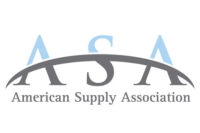- Global Oil & Gas Trends. Continued strength in commodity prices, compression in refining margins and further industry consolidation are among the top trends to look at in the oil and gas industry in 2006, according to a report published by Standard & Poor's Ratings Services titled “Top 10 Global Oil And Gas Trends In 2006.” Although prices could very well drop from 2005 levels, a precipitous, sustained drop in oil or natural gas prices from current levels is unlikely in 2006. The biggest wildcard regarding what will happen to commodity prices in the near term is demand. The sustainability of strong demand growth in Asia raises concerns in the longer term should this heated level of growth moderates, but the U.S. Energy Information Administration (EIA) forecasts that this growth will continue at fairly strong levels (around 2% globally) in 2006.
- Global Steel Production. MEPS International Ltd., a U.K.-based analyst of global steel trends, forecasts global crude steel production climbing to 1,175 million tons this year, an increase of 4%. The majority of the gain in steel manufacturing will come, once again, from Asian producers, with Chinese steel mills expected to contribute more than 80% of the improvement. The market will be oversupplied for at least the first half of this year, according to MEPS.
- China To Shut Down Small Mills. British news agency Reuters reported that China plans to use new environmental, energy and water consumption and product quality standards to close 30% of the country's shoddiest steel capacity. The new regulations, yet to be issued, will force outdated, polluting steel capacity to shut.
- Bio-Pharm Hot Around Great Lakes. According to Industrialinfo.com (IIR - Industrial Info Resources, Houston) the Great Lakes region remains intent on claiming its place as a stronghold for the pharmaceutical-biotech industry. An analysis at the end of 2005 revealed that 78 active projects, carrying a total investment value (TIV) of $3.1 billion, were scheduled for kick off in 2006. A combination of both traditional manufacturing projects and university-based research centers, the projects are spread out over the region's states, which include Illinois, Indiana, Kentucky, Michigan, Ohio and Wisconsin.
Hot & Cold States
Industrialinfo.com (IIR) also has singled out a few states for exceptional performance - up or down - in 2006, as follows:- Illinois. As of this writing, IIR was tracking 190 projects worth in excess of $9.6 billion that are planned to begin construction in Illinois in 2006. This would be a significant increase over 2005's 167 projects worth $6.5 billion, if these early numbers hold true through the end of the year. The most striking increase comes in the Power Industry where over $7.4 billion worth of projects are expected to begin construction during the year. This increase, almost $3 billion over 2005's final numbers, is mainly due to an increase in coal-fired power plant activity in the state. In second place is the Industrial Manufacturing industry, with just under $600 million in project work anticipated to begin construction during the year, followed by the Pharmaceutical/Biotech industry at just over $400 million.
- Alabama. As the year progresses, the number of planned projects that may begin construction in 2006 will increase, and possibly rise to 200 and break the $5 billion mark. To date, the Industrial Manufacturing Industry plans to spend over $1 billion on grassroots construction and expansions of existing operations. A host of automotive parts manufacturing and aircraft assembly and component plants have expansion plans. Later this year, a $600 million aircraft manufacturing plant will break ground on 1.5 million square feet of space. Power plant construction projects will account for $825 million in new expenditures.
- Michigan Industrial Spending To Decline. The state of Michigan will undergo a major lull in spending thanks to the struggling automotive industry, according to IIR. Power Industry spending is down by over $1.3 billion from 2005 levels and the Industrial Manufacturing Industry spending is down by just over $1.1 billion. In 2005, project fallout reached the 40% level. Already in 2006, project fallout has surpassed 2005's number and is approaching 50% for the year. This is a pretty significant increase over just a year ago and is reflective of the turmoil within the state's industries. This number may well rise into the 60-70% range as the year progresses.
- California also shows a decrease in projected spending for 2006 compared to 2005. As of this writing, there are 232 projects worth $12 billion scheduled to start construction in 2006. That is 20% less than 2005 figures of 246 projects worth $15.4 billion, but still enough to allow California to maintain its second place position behind Texas in the Top 20 states list of most active states.
The state's thriving Chemical Processing Industry has the potential for capital outlays of $404 million in expansion plans.

